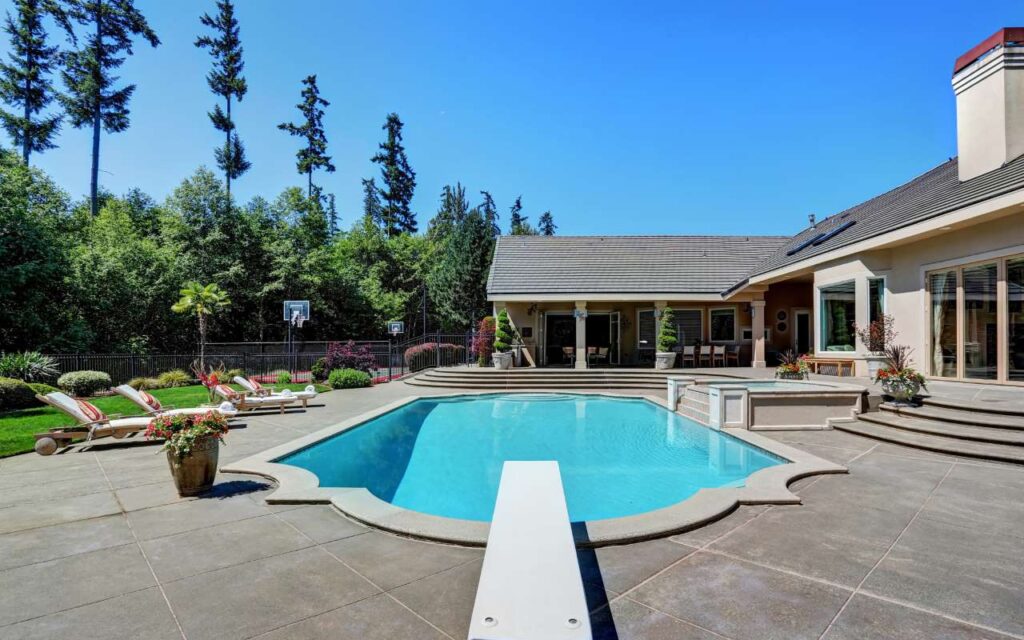Rain Gardens: Enhancing Property Landscapes and Pool Drainage
Discover how rain gardens can enhance your property while effectively managing pool drainage issues. Learn tips, benefits, and best practices!
Rain gardens are sustainable landscaping features designed to capture and manage stormwater runoff effectively. As climate awareness grows, home and property owners are increasingly seeking methods to improve their landscapes while addressing drainage challenges. This blog post will explore the benefits of rain gardens, how they can enhance your property’s aesthetic appeal, their role in managing pool drainage, and practical tips for installation and maintenance.
What is a Rain Garden?
– A rain garden is a shallow, planted depression that absorbs rainwater runoff from impervious surfaces like roofs, driveways, and sidewalks.- Typically filled with native plants, rain gardens are designed to collect water and allow it to infiltrate into the ground rather than running off into storm drains and local waterways.- By promoting natural filtration, these gardens improve water quality and help recharge groundwater supplies.Rain gardens can vary in size and shape, depending on the area available and the amount of runoff generated. They serve a dual purpose: enhancing the landscape and managing water more efficiently, particularly in areas prone to pooling or flooding around pools.
Benefits of Rain Gardens for Property Owners
– Environmental Impact: Rain gardens help mitigate stormwater runoff, reducing the strain on municipal storm systems and preventing local flooding. They also filter pollutants, enhancing water quality in nearby rivers and streams.- Biodiversity: By incorporating native plants, rain gardens create habitats for local wildlife, including pollinators like bees and butterflies, which are crucial for balanced ecosystems.- Aesthetic Appeal: Beyond their functional benefits, rain gardens can beautify your property. They can be designed to suit various styles, from formal landscapes to more natural settings, adding color and texture throughout the year.- Cost-Effectiveness: For property owners with swimming pools, rain gardens can reduce the need for expensive drainage solutions and landscaping adjustments. By capturing pool overflow and rainwater, they help maintain a drier and more manageable yard.Incorporating a rain garden can address drainage issues effectively while simultaneously enhancing the property’s visual appeal.
How Rain Gardens Help with Pool Drainage
Managing water around swimming pools can be challenging, especially during heavy rains. Rain gardens can provide an effective solution by:- Redirecting Pool Runoff: Instead of allowing excess water from your pool to flow uncontrollably into the yard, a rain garden can be strategically placed to capture that runoff, diverting it away from your home’s foundation and pooling areas.- Reducing Erosion: Continuous water flow can erode soil around pool areas. By using a rain garden, you stabilize the soil and minimize erosion, protecting not just the pool area but other landscaped parts of your property.- Promoting Natural Drainage: Rain gardens are designed to absorb water, significantly reducing the time and intensity of standing water around pools. This helps prevent algae growth, making pool maintenance easier and less frequent.To maximize the benefits of rain gardens in managing pool drainage, consider their positioning and size relative to your pool. Proper design is crucial for optimal functionality.
Steps to Create a Rain Garden
Creating a rain garden requires careful planning and execution. Here’s a step-by-step guide:1. Choose the Location: Identify areas where water tends to pool or drain, ideally at least 10 feet away from your pool and foundation. Consider the slope of your yard to ensure proper drainage.2. Determine the Size: The size of your rain garden should be about 20-30% of the area that drains into it. This ensures it can handle the runoff effectively.3. Select Plants: Opt for native plants that thrive in your local climate and soil conditions. These plants typically require less maintenance and support local wildlife.4. Excavate the Area: Dig out the garden to create a shallow depression that will hold water. The depth may vary from 6 to 12 inches, depending on the amount of runoff expected.5. Improve Soil Quality: Amend the soil with compost to enhance its structure and drainage capabilities. Ensure the soil can absorb water quickly.6. Plant the Garden: Arrange plants in clusters for a natural look, placing taller plants in the center and shorter ones around the edges to create visual interest.7. Mulch and Water: Add a layer of mulch to help retain moisture and suppress weeds. Water the garden well during the initial establishment phase.Once installed, rain gardens require minimal maintenance. Regular weeding, occasional mulching, and monitoring the plants’ health are usually sufficient.
Best Practices for Maintaining Your Rain Garden
To ensure your rain garden thrives and continues to function effectively, consider these maintenance tips:- Regular Inspection: Check your rain garden after heavy rain to assess how well it managed runoff. Make adjustments if necessary.- Weed Control: Weeds can compete with your plants for water and nutrients. Regularly removing weeds will help maintain the health of your rain garden.- Monitor Plant Health: Keep an eye on your plants for any signs of disease or pest infestations. Early intervention can prevent more significant issues.- Maintenance of Infiltration: Over time, sediment may accumulate in the rain garden and reduce its effectiveness. Periodically remove debris and sediment to maintain proper infiltration rates.- Seasonal Care: Different seasons bring different challenges. In winter, ensure that snow and ice are managed to prevent damage to delicate plants.By following these practices, you can enjoy the benefits of a rain garden while enhancing the overall aesthetic of your property.
Rain Gardens and Pool Maintenance: A Synergistic Relationship
Homeowners often overlook the relationship between landscaping and pool maintenance. However, a well-planned rain garden can significantly ease the workload associated with pool upkeep. Here’s how:- Algae Prevention: Standing water near pools can lead to algae growth. With rain gardens absorbing excess moisture, there’s less chance for water to stagnate and promote algae blooms.- Chemical Runoff Control: Rain gardens can filter out chemicals and debris from pool overflow before they enter the local watershed, promoting a healthier environment.- Enhanced Property Value: Well-maintained landscapes, including rain gardens, can increase property values. Prospective buyers often appreciate eco-friendly features that indicate responsible home maintenance.As sustainable landscaping practices gain popularity, integrating rain gardens into your property not only enhances its beauty but also contributes to responsible water management practices.
Conclusion
Incorporating a rain garden into your property landscape offers numerous benefits, particularly for pool owners facing drainage challenges. By effectively managing stormwater runoff, enhancing property aesthetics, and promoting biodiversity, rain gardens serve as a valuable addition to any home. Their role in reducing erosion, preventing algae growth, and filtering runoff contributes to healthier ecosystems and easier pool maintenance.As you consider enhancing your outdoor space, think about the potential of rain gardens—not just as a practical solution but as a beautiful, sustainable landscaping feature. If you’re ready to explore the world of rain gardens further, consider seeking professional landscape designers or resources that specialize in eco-friendly practices.Transform your property today, and make a positive impact on your local environment! For those looking into business opportunities related to pool services, you might want to explore
pool routes for sale to expand your entrepreneurial journey while maintaining sustainable practices. For guidance on how it all works, check out our
Pool Routes How It Works.



